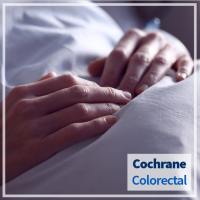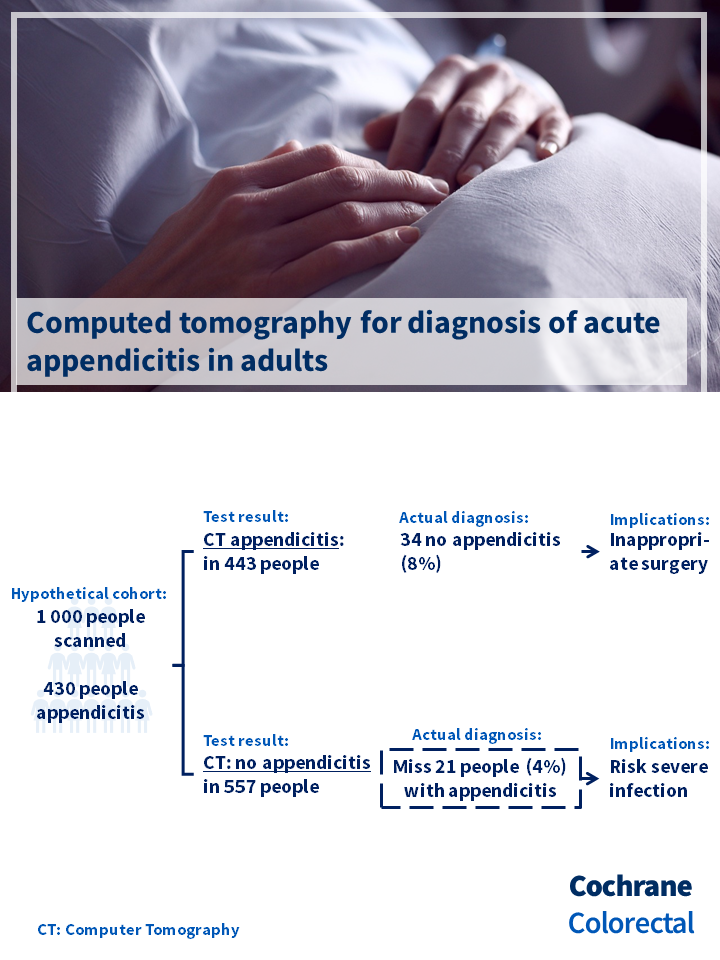
We want to share this Diagnostic Test Accuracy Cochrane review: Computed Tomography for diagnosis of acute appendicitis in adults.
Primary objective: To evaluate the accuracy of CT for diagnosing appendicitis in adults with suspected appendicitis.
Main results: 64 studies including 71 separate study populations with a total of 10,280 participants. A total of 4583 with and 5697 without acute appendicitis.
In this DTA Cochrane review, the authors conducted a comprehensive review with meta-analyses. The authors included prospective studies that compared results of CT versus outcomes of a reference standard in adults (> 14 years of age) with suspected appendicitis.
The rigorous analysis revealed that
- Summary sensitivity was 0.95 (95% confidence interval (CI) 0.93 to 0.96), and summary specificity was 0.94 (95% CI 0.92 to 0.95)
- At the median prevalence of appendicitis (0.43), the probability of having appendicitis following a positive CT result was 0.92 (95% CI 0.90 to 0.94)
- The probability of having appendicitis following a negative CT result was 0.04 (95% CI 0.03 to 0.05)
- Summary sensitivity was higher for CT with than for unenhanced CT
- Overall results of these studies indicate that in theory, if CT of any type were to be used in an emergency department in a group of 1000 people, of whom 43% have appendicitis, then:
- an estimated 443 people would have a CT result indicating appendicitis, and of these, 8% would not have acute appendicitis; and
- of the 557 people with a CT result indicating that appendicitis is not present, 4% would actually have acute appendicitis
The sensitivity and specificity of CT for diagnosing appendicitis in adults are high. Unenhanced standard‐dose CT appears to have lower sensitivity than standard‐dose CT with intravenous, rectal, or oral and intravenous contrast enhancement. Use of different types of contrast enhancement or no enhancement does not appear to affect specificity. Differences in sensitivity and specificity between low‐dose and standard‐dose CT appear to be negligible.
Access publication here: https://doi.org/10.1002/14651858.CD009977.pub2

